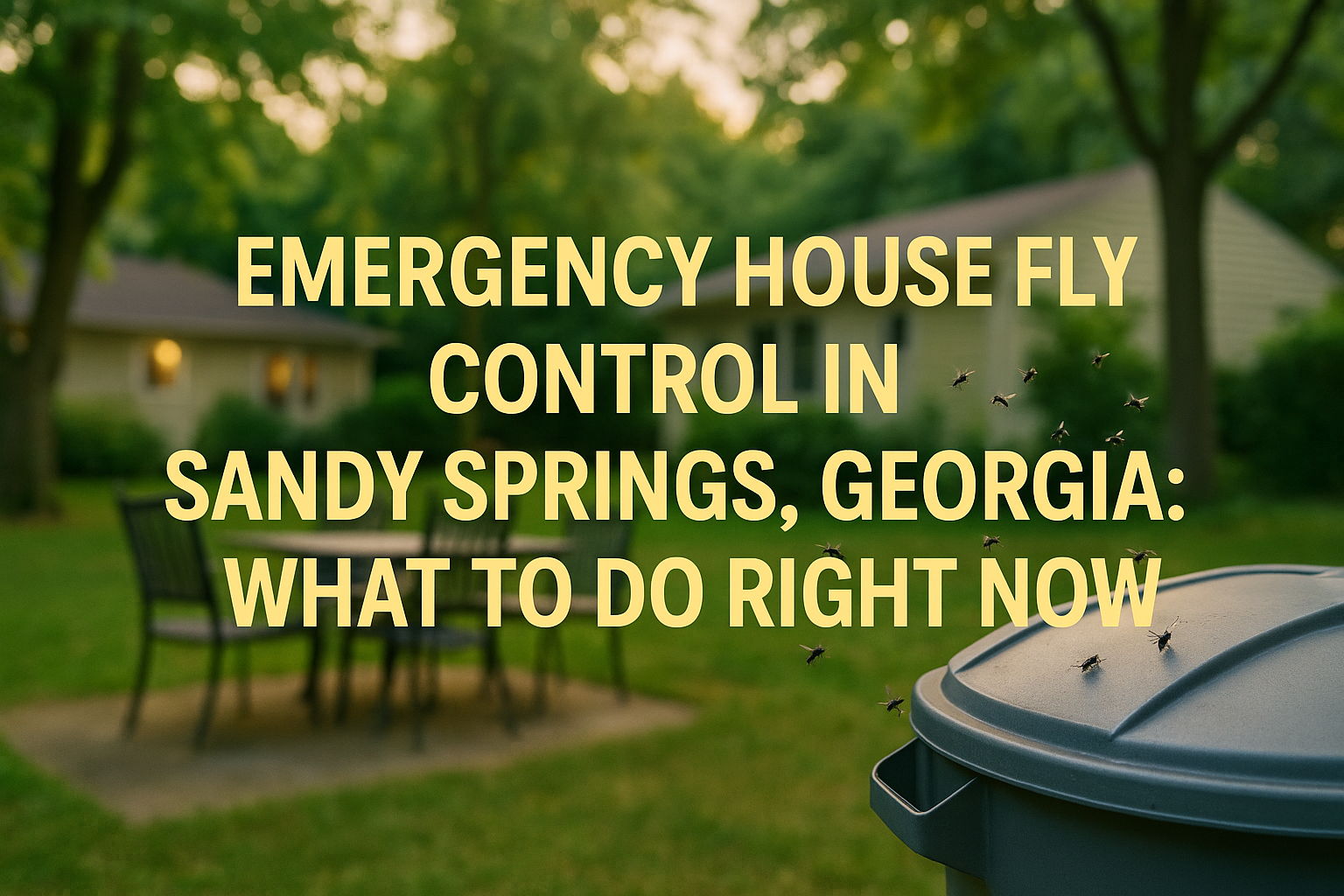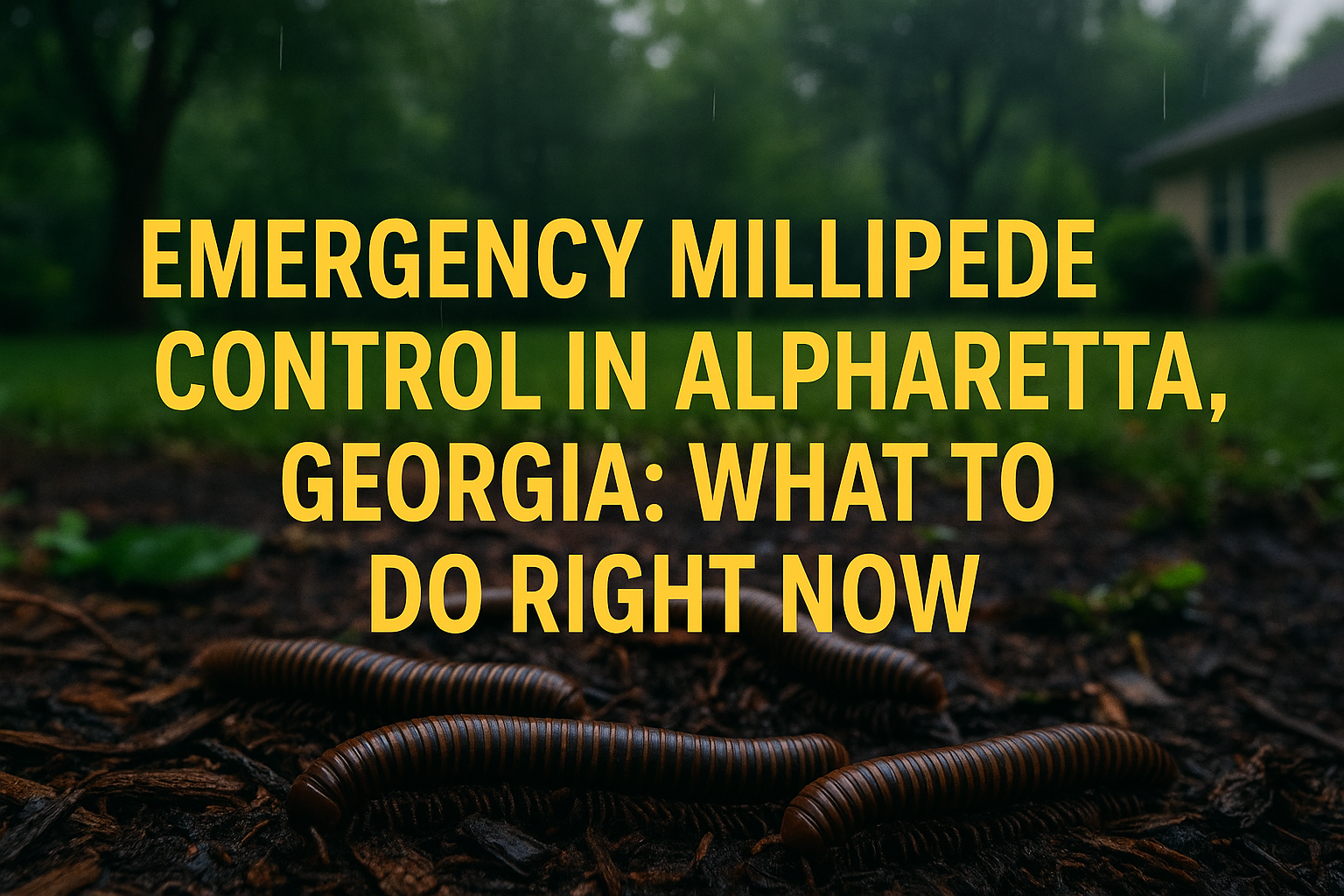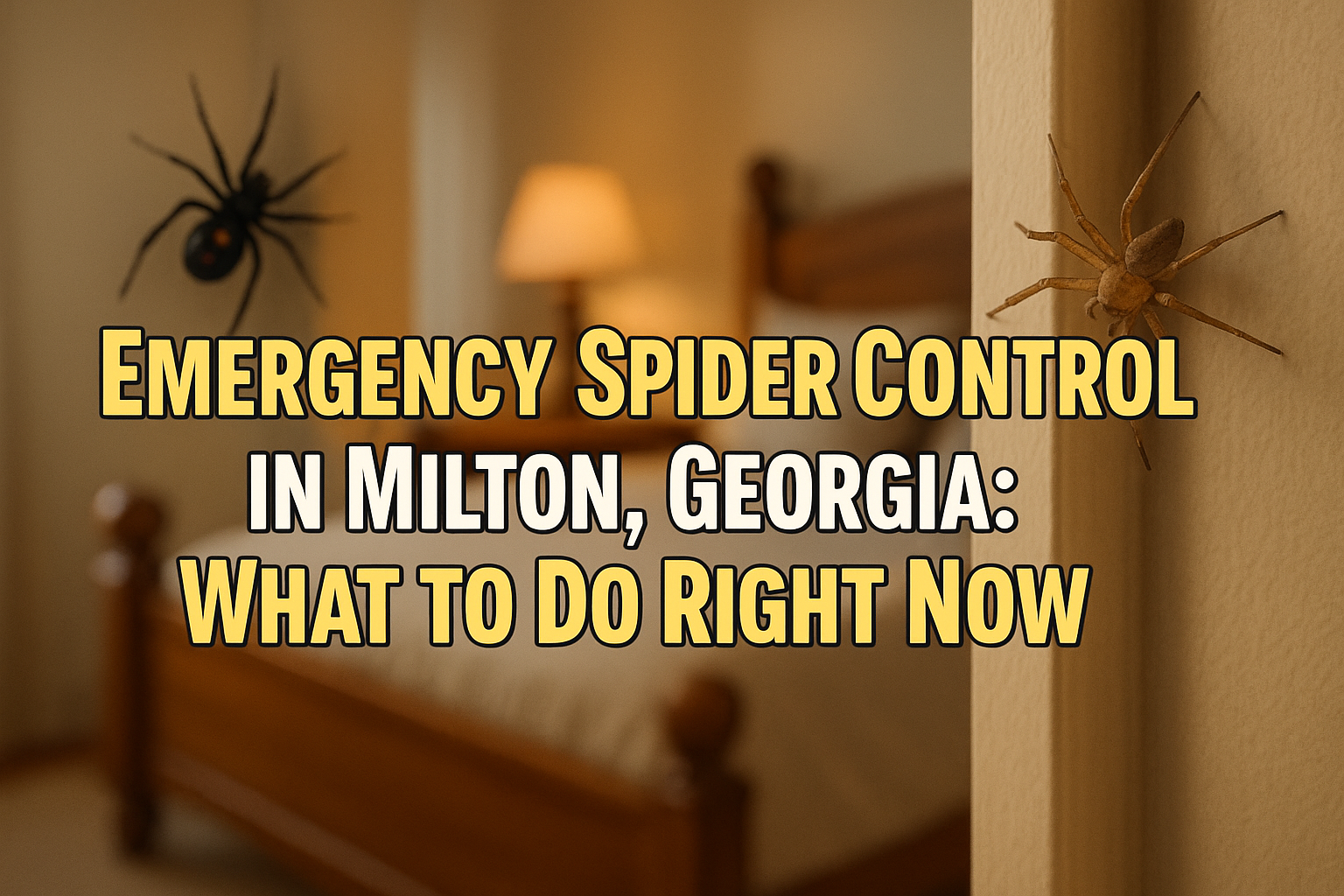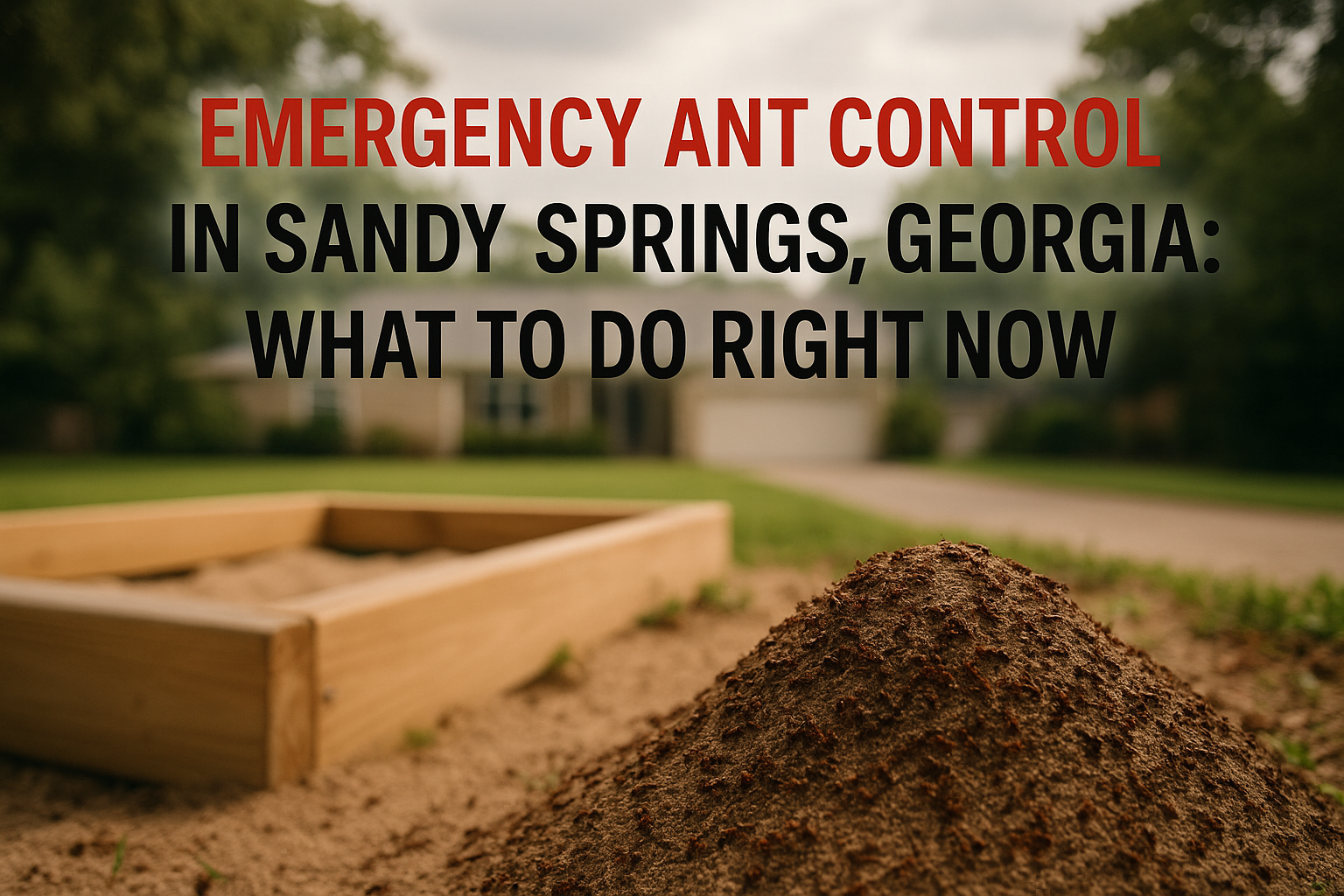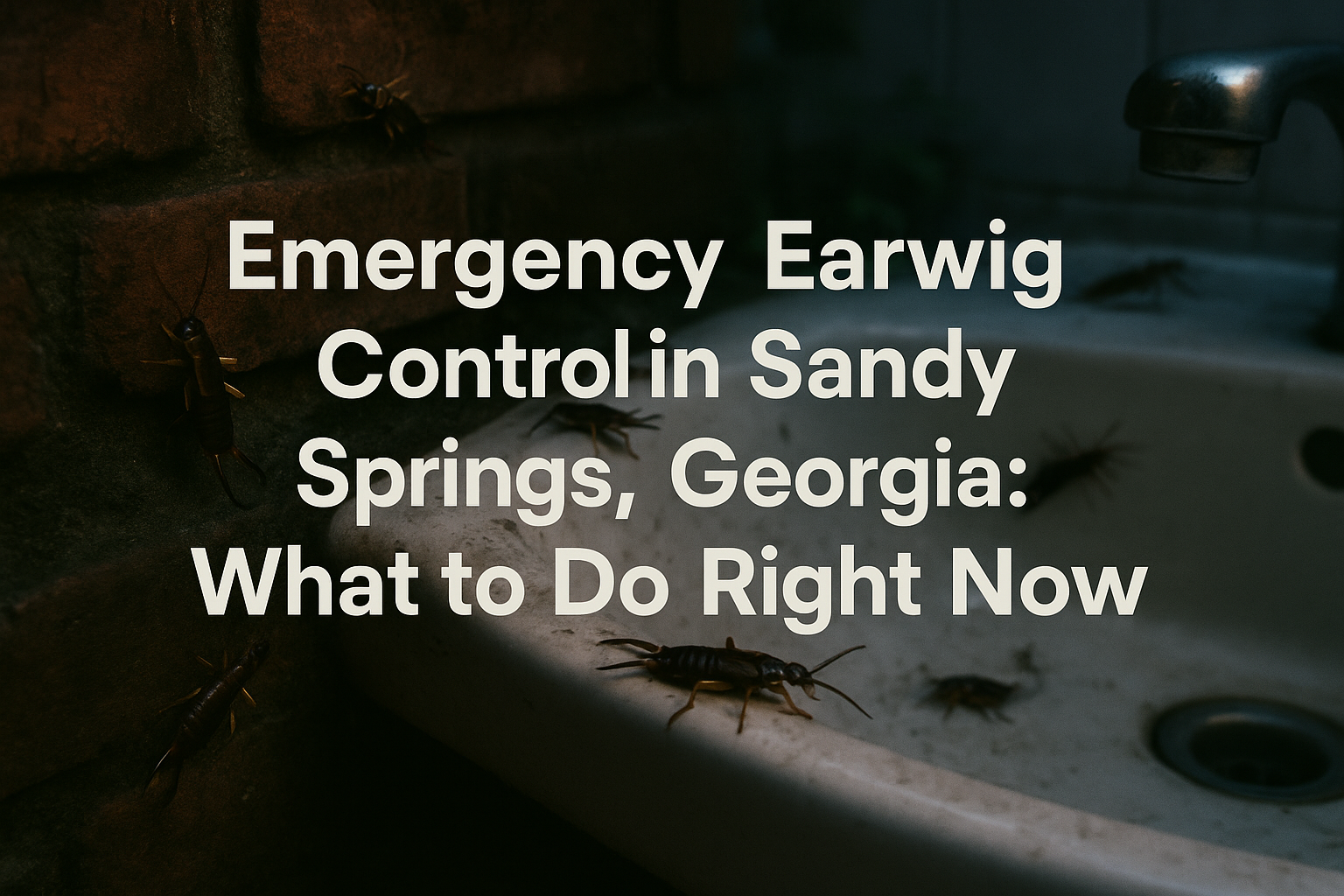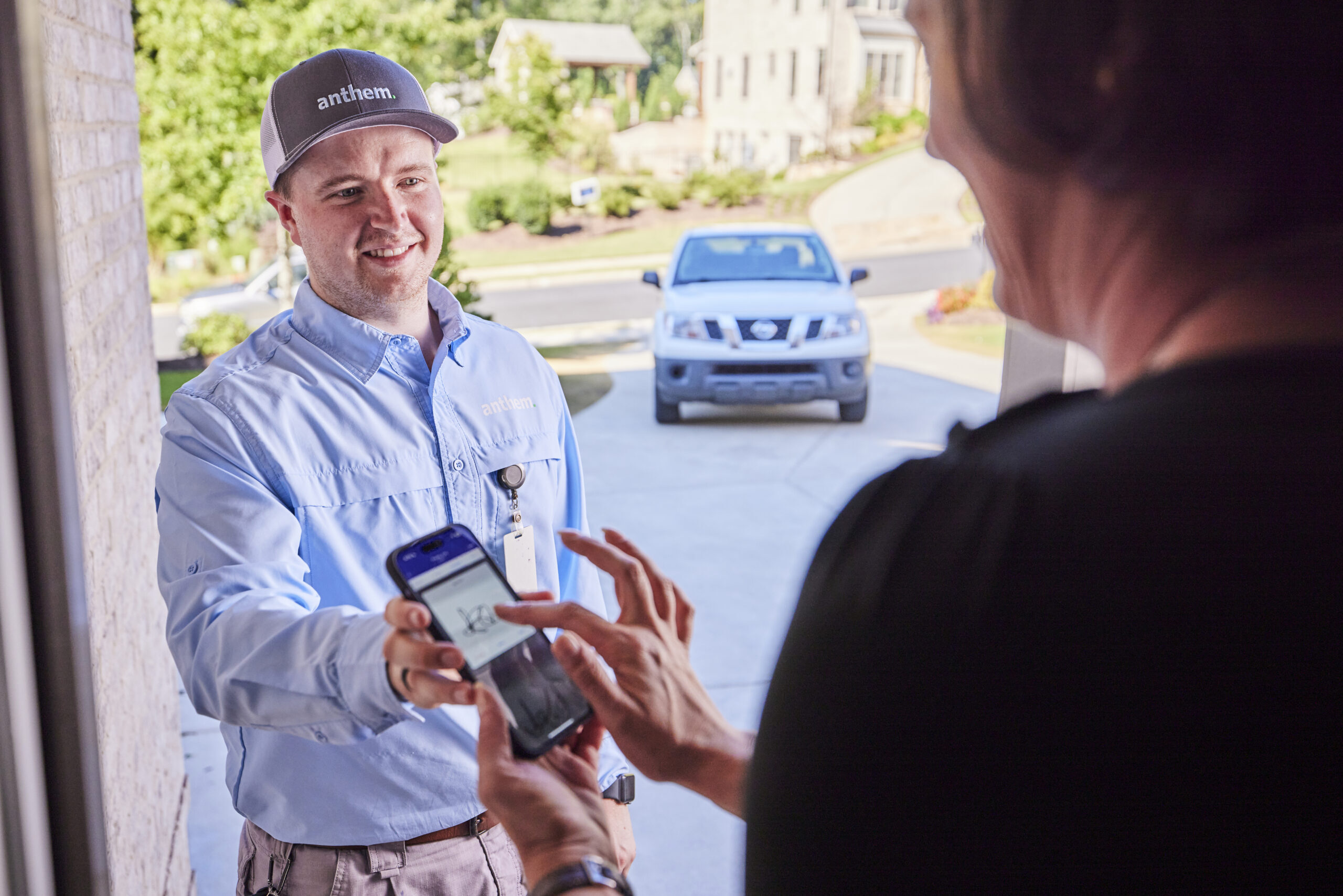Sudden Millipede Invasions in Sandy Springs: Why Fast Action Matters
If you’ve come home recently and found your basement or bathroom crawling with long, wriggly millipedes, you’re not the only one in Sandy Springs dealing with this headache—especially after heavy rain. Millipede problems tend to hit hard and fast around here, popping up overnight in neighborhoods like Glenridge Hammond, Riverside, and North Springs. Many homeowners end up searching for millipede control Sandy Springs Georgia services to stop infestations quickly. You don’t want guests, kids, or pets stumbling across dozens (or hundreds) of these pests, and let’s be honest, nobody enjoys the crunch underfoot.
Here’s the thing: millipedes themselves won’t bite, sting, or make you sick. But their sudden invasion is a red flag—one that usually points to issues with moisture, foundation cracks, or landscaping too close to the house. In places like Sandy Springs, where our clay soil and shady lots hold water, these pests can rush inside whenever their nests outside get flooded out.
What catches most folks off guard is how quickly these infestations get out of control. Just a couple can become a squirming swarm overnight if the conditions are right. That’s why so many homeowners pick up the phone for emergency pest control as soon as they spot the problem. And yes, it usually comes with a price: most emergency millipede jobs in Sandy Springs cost anywhere from $175 to $350, sometimes higher for larger houses or if the infestation keeps coming back.
Here’s the real issue—calling in the pros isn’t always the only answer, but fast action is. Whether you’re looking to stop the crawl with some quick DIY fixes or thinking about bringing in an expert, it pays to know what drives those emergency costs and how to stop millipedes from setting up camp again.
Stick around as we break down your options: what you can do right now versus what really needs professional help, what makes one infestation pricier than another, and simple steps that actually keep millipedes out for good. Next up—a side-by-side look at DIY vs. pro solutions so you can make the call that’s right for your peace of mind (and your wallet).
What Impacts the Cost of Emergency Millipede Control in Sandy Springs?
If you’re faced with a sudden millipede invasion in Sandy Springs, you’re probably wondering what a quick fix might set you back. The truth is, the price for millipede control Sandy Springs Georgia services can shift quite a bit depending on the situation—and knowing why helps you make the best call for your home and wallet.
- Scope of the Infestation: The bigger the swarm and the more rooms they’ve found, the more it’s going to cost. If millipedes have only hit the basement, that’s one thing. But if they’re all over, expect a higher bill. Clean, finished basements are usually quicker to treat than unfinished, cluttered, or damp spaces, too.
- Timing and Urgency: If you need someone out after hours, on a weekend, or during a surge (say, after a big rain or when everyone in the neighborhood’s calling), there’s going to be a premium—generally 15–30% over the standard rate. Big surprise swarms or calls outside business hours cost more.
- Treatment Choices: There’s a difference between a DIY spray, basic chemical treatments, and eco-friendly or family-safe options. Professional, fume-free, or green methods often run a bit more than your traditional sprays. Many folks in Sandy Springs are asking for these safer options, especially with kids and pets around.
- Features of Your Home: Got a finished basement, a crawlspace, or one of those heavily-landscaped yards you see around Riverside? That can make treatments trickier (and pricier). Older homes off Mount Vernon Highway or places with lots of nooks and crannies sometimes take extra time to get right.
- Neighborhood and Weather: It’s not just what’s inside. Recent wet weather or shaded, tree-heavy lots can be millipede magnets. If your area’s seeing a spike, or neighbors are calling in for service, you might need specialty treatments (and, yes, that bumps the price).
As a ballpark, standard visits for millipede control Sandy Springs Georgia services usually run $175–$350, depending on the details above. Keep in mind: if you need an emergency call or a repeat visit to finish the job, those extras can add 15–30% more to your total.
Getting a fair deal is all about sharing details with your pro: how many rooms, what kind of yard you have, when you need the work done, and if you’ve seen swarms move in after a rain. The more you share, the closer you’ll get to an honest price—and a pest-free home.
What Impacts the Cost of Emergency Millipede Control in Sandy Springs?
If you’re faced with a sudden millipede invasion in Sandy Springs, you’re probably wondering what a quick fix might set you back. The truth is, the price for millipede control Sandy Springs Georgia can shift quite a bit depending on the situation—and knowing why helps you make the best call for your home and wallet.
- Scope of the Infestation: The bigger the swarm and the more rooms they’ve found, the more it’s going to cost. If millipedes have only hit the basement, that’s one thing. But if they’re all over, expect a higher bill. Clean, finished basements are usually quicker to treat than unfinished, cluttered, or damp spaces, too.
- Timing and Urgency: If you need someone out after hours, on a weekend, or during a surge (say, after a big rain or when everyone in the neighborhood’s calling), there’s going to be a premium—generally 15–30% over the standard rate. Big surprise swarms or calls outside business hours cost more.
- Treatment Choices: There’s a difference between a DIY spray, basic chemical treatments, and eco-friendly or family-safe options. Professional, fume-free, or green methods often run a bit more than your traditional sprays. Many folks in Sandy Springs are asking for these safer options, especially with kids and pets around.
- Features of Your Home: Got a finished basement, a crawlspace, or one of those heavily-landscaped yards you see around Riverside? That can make treatments trickier (and pricier). Older homes off Mount Vernon Highway or places with lots of nooks and crannies sometimes take extra time to get right.
- Neighborhood and Weather: It’s not just what’s inside. Recent wet weather or shaded, tree-heavy lots can be millipede magnets. If your area’s seeing a spike, or neighbors are calling in for service, you might need specialty treatments (and, yes, that bumps the price).
As a ballpark, standard visits for millipede control Sandy Springs Georgia typically run $175–$350, depending on the details above. Keep in mind: if you need an emergency call or a repeat visit to finish the job, those extras can add 15–30% more to your total.
Getting a fair deal is all about sharing details with your pro: how many rooms, what kind of yard you have, when you need the work done, and if you’ve seen swarms move in after a rain. The more you share, the closer you’ll get to an honest price—and a pest-free home.
How Sandy Springs Homes and Weather Mix Up Millipede Problems
If you’ve ever wondered why millipedes seem to love your Sandy Springs home more than others, it all boils down to our local climate and the way our houses are built. We live in a humid, subtropical pocket—with muggy summers, plenty of rain in spring and fall, and just the right kind of leafy neighborhoods that millipedes can’t resist.
Homes in places like Glenridge Hammond and River Shore Estates, for example, often have lots of tree cover and older construction. After a heavy Georgia rainstorm, these shady yards trap moisture near the foundation—just what millipedes are after. If your place has a crawl space, wood siding, or those original basement windows that never quite seal, you’re probably used to seeing these critters make a sneak attack indoors, especially after irrigation or storms.
On the other hand, newer homes around North Springs are usually better protected. They often feature proper grading around the foundation, meaning water drains away instead of pooling under the house. Tight seals, concrete slabs, and updated window wells can make a huge difference, cutting down on the constant crawl of bugs you find in older homes.
The truth is, these local factors do more than just raise your blood pressure—they can also bump up the cost of getting rid of millipedes. If a specialist has to get under a damp crawl space, treat heavy mulch beds, or target hard-to-reach basement corners, you’re likely looking at an extra $50–$150 per visit for those tricky jobs. Moisture treatments and extra time spent in tough spots are just part of the reality for homeowners in neighborhoods with older or unique property setups.
So whether you’re dealing with legacy windows, soggy flowerbeds, or simply the quirks of Georgia weather, knowing what makes your home a bug magnet is half the battle. Up next, we’ll walk you through what these risk factors look like and how they shape the service options that’ll give you some peace of mind.
Keep Millipedes in Check and Save Money with These Smart Moves
If you’ve spotted millipedes crawling across your basement floor or porch, you’re not alone. Here in Sandy Springs, our shady yards and rainy spells make it easy for these pests to get comfortable. The good news? A few simple habits can go a long way toward keeping millipedes out for good—and help you dodge costly, last-minute pest control calls.
- Fix Drainage Fast: Water pooling near your foundation is an open invitation. Make sure gutters flow away from your house and downspouts are clear. If you notice soggy spots in your yard, address them before they turn into pest hotspots.
- Tidy Up Yard Debris: Old leaves, firewood piles, and heavy layers of mulch are prime hangouts for millipedes. Routinely rake leaves, clear mulch away from the base of your house, and store firewood off the ground and away from walls—especially after storms roll through.
- Seal Entry Points: Check your doors, basement vents, and window screens for any gaps or tears. Even tiny cracks can let fuzzy little millipedes slip in. A bit of weatherproof caulk or a new screen can make all the difference.
- Control Indoor Humidity: Millipedes love a damp basement. Keeping things dry is half the battle. Run a dehumidifier if you notice musty smells, and don’t forget to use fans to circulate air in problem spots.
- Regular Checks Save Headaches: After a rainy week, walk your property. Look for places moisture collects or debris has built up. Staying ahead of these issues pays off year-round.
These are fixes you can tackle between weekend projects, and they’ll save you the stress (and bill) of those emergency pest control calls. Even if you’ve already had pros come out, these habits help make sure you’re not dealing with a repeat performance next season. Keeping up with prevention means a healthier home and a little extra cash in your pocket—not bad for just a bit of routine TLC!
When to Call for Millipede Emergencies in Sandy Springs
If you’ve spotted millipedes marching into your Sandy Springs home, here’s some straight talk: timing is everything. Millipedes don’t just roll in for fun—they usually invade right after those classic Georgia downpours, especially during the spring-to-fall transition. That first soggy week after a big storm? That’s when we get the most frantic calls.
Want to beat the rush and save yourself a headache (and maybe a few bucks)? Book your preventive checks or emergency treatments during drier weeks. Not only do you get better scheduling options, but you might also lock in a better rate before demand spikes. If you live in flood-prone pockets—think near Abernathy Greenway or around Spalding Woods—it’s smart to calendar pest checks just before spring and again before the fall waves hit. This way, you stay ahead of any surprise infestations and can often take advantage of off-peak pricing.
But let’s be real—if you’re already seeing millipedes scuttling around inside, don’t wait. You’ve got a 24–48 hour window to nip the problem in the bud before it mushrooms into a full-blown (and pricier) infestation. Fast action keeps the pests out and your wallet happier in the long run.
Most Sandy Springs homeowners go with a combo move: outdoor prevention plus an indoor barrier treatment. It’s the winning play, hands down, especially if you want peace of mind through the rainiest seasons. Think of it as a one-two punch that blocks them at the door and keeps your living spaces clear all year long.
So, check that calendar, keep an eye on Sandy Springs weather, and always jump on millipede problems quickly. Booking ahead or pairing services for millipede control Sandy Springs Georgia multiplies your protection—and keeps those little crawlers where they belong… outside.
Don’t Wait—Call Anthem Pest for Your Free Emergency Quote
If you’ve spotted just a few millipedes, don’t shrug it off—those little guys can turn into a big problem fast here in Sandy Springs. Anthem Pest Control has you covered every step of the way. Give us a call at 877-3718-5196 or click over to this page for your free, same-day quote. There’s zero obligation, just honest advice and real solutions from our local experts.
Homeowners in Glenridge Hammond, Riverside, and all across Sandy Springs know us for fast, safe, and effective millipede control—done right the first time. Our licensed crew takes the time to do the job thoroughly, charging only what’s fair and never adding surprise fees. If you want it gone, and you want it done right, you can trust Anthem Pest to deliver, with prevention and clear answers every step of the way. Don’t put off peace of mind. Reach out today and we’ll have your home millipede-free and back to normal before you know it.
Common Questions About Emergency Millipede Control in Sandy Springs
- Are millipedes dangerous?
Millipedes are just a hassle, not a health threat. They don’t bite or sting, so there’s no need to panic—about the worst you’ll see is some minor skin irritation if you handle them directly. - Why are millipedes suddenly inside my house?
It’s usually the weather talking. After heavy rains, a stretch of Georgia humidity, or if you’ve got drainage problems, millipedes start looking for drier ground—and that often means your home, especially if you’re close to woods or mulch beds. - How fast can a professional get here?
In Sandy Springs, you shouldn’t have to wait. Anthem Pest and other reputable companies will aim to show up the same day you call, or first thing the following morning for emergencies. - Will regular bug spray fix a millipede invasion?
If you’re only seeing a couple here and there, you might knock them out with DIY solutions. But if you’re seeing dozens, it’s time for a professional. The pros have access to much stronger products and know where to treat for the big results. - How can I stop millipedes from coming back?
Start with what’s outside: clear away leaf piles and mulch, fix broken gutters, and make sure water drains away from your foundation. Seal up cracks, use dehumidifiers, and don’t let debris stack up near the house. - Do I still need to worry after emergency service?
Unfortunately, yes—ongoing prevention is key. If your home stays damp or easy to slip into, millipedes might come back for an encore. Keeping things dry and sealed up makes a huge difference. - Can I get an estimate before booking treatment?
Definitely. Give Anthem Pest a call, and they’ll come out to assess your situation—with no obligation. You’ll get a free quote and clear plan before anyone breaks out the sprayer. - Are the treatments safe for my family and pets?
Absolutely. The products used are designed for residential safety, and professionals will walk you through when it’s okay to re-enter treated areas.
If you’re tired of surprise guests with too many legs, just reach out. We’re here to keep your Sandy Springs home millipede-free—fast, safe, and for good.





